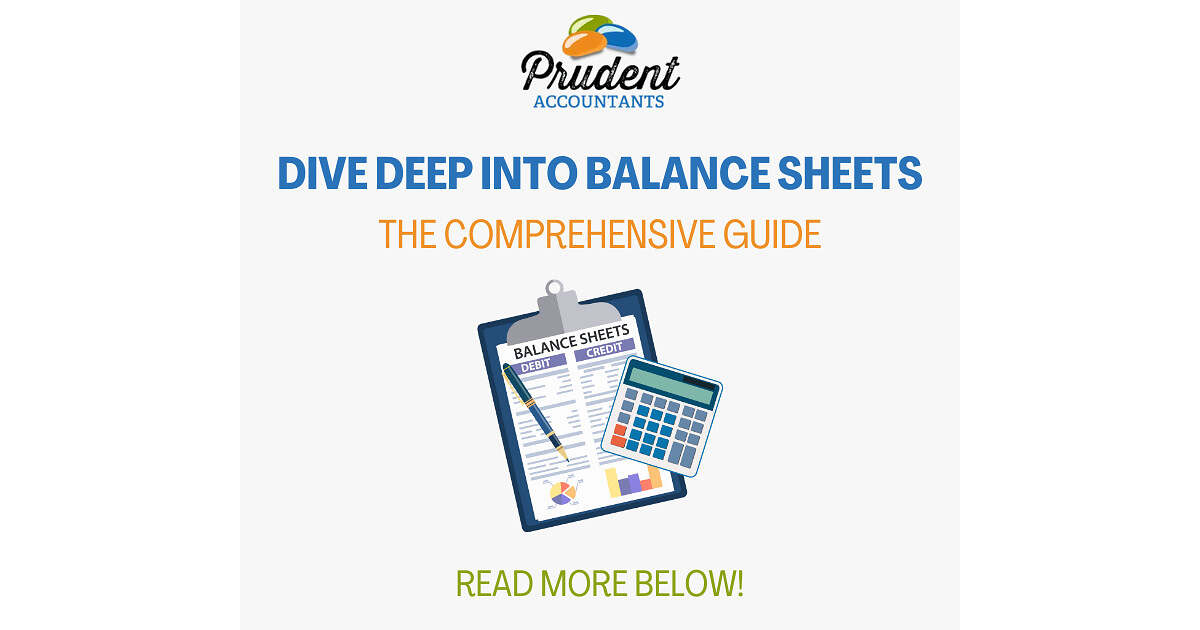Dive Deep into Balance Sheets: The Comprehensive Guide

Understanding the intricate details of a balance sheet is crucial for anyone looking to grasp the financial health and operational efficiency of a business. This comprehensive guide aims to demystify balance sheets, providing you with a deeper understanding of their components, significance, and strategic implications.
The Foundation of Balance Sheets
A balance sheet is a financial statement that summarizes a company’s financial position at a specific point in time, encapsulating assets, liabilities, and shareholders’ equity. It’s based on the fundamental equation:
Assets = Liabilities + Shareholders’ Equity
This equation ensures that the company’s resources (assets) are financed by debts (liabilities) or by the owner’s claims (equity).
Dissecting the Balance Sheet
Assets: The Economic Resources
Assets are classified into:
- Current Assets: Cash and other assets expected to be converted into cash within a year, such as accounts receivable and inventory.
- Non-Current Assets: Long-term investments, property, plant, equipment (PP&E), and intangible assets like patents and goodwill.
Assets are vital for operational success and are listed in order of liquidity, from most to least liquid.
Liabilities: The Financial Obligations
Liabilities are segmented into:
- Current Liabilities: Obligations due within a year, including accounts payable, short-term loans, and accrued expenses.
- Non-Current Liabilities: Debts and other obligations that are due beyond one year, such as bonds payable and long-term lease obligations.
Understanding liabilities helps in assessing the company’s solvency and risk level.
Shareholders’ Equity: The Owners’ Claim
Shareholders’ Equity represents the owners’ claim after all liabilities have been settled. It includes:
- Share Capital: Funds raised by issuing shares.
- Retained Earnings: Cumulative net income not distributed as dividends but reinvested in the business.
Equity is a measure of the company’s net worth and financial stability.
Why Balance Sheets Matter
Balance sheets are indispensable for several reasons:
- Financial Health Assessment: They offer a snapshot of the company’s financial standing, enabling stakeholders to make informed decisions.
- Liquidity Analysis: The balance sheet helps evaluate the company’s ability to meet short-term liabilities with its current assets.
- Leverage and Efficiency: It provides insights into the company’s use of debt versus equity financing and how efficiently assets are used to generate revenue.
Strategic Insights from Balance Sheets
- Risk Management: By analyzing liabilities and equity, companies can manage financial risk more effectively.
- Investment Decisions: Investors use balance sheets to determine a company’s financial health and growth potential.
- Operational Strategies: Businesses can adjust strategies based on asset utilization and capital structure to optimize performance.
The Role of Prudent Accountants
Prudent Accountants play a pivotal role in helping businesses and individuals understand and leverage their balance sheets for better financial planning and decision-making. Our services include:
- Detailed Financial Analysis: Offering insights into financial health, liquidity, and operational efficiency.
- Strategic Planning: Assisting with budgeting, forecasting, and long-term financial planning.
- Risk Assessment: Evaluating financial risks and providing strategies to mitigate them.
Final Thoughts
The balance sheet is a critical financial statement that provides a comprehensive overview of a company’s financial position. By understanding and analyzing balance sheets, stakeholders can gauge a company’s health, make strategic decisions, and plan for future growth.
For personalized advice and assistance in understanding or preparing balance sheets, reach out to Prudent Accountants. Our team is dedicated to ensuring your financial stability and success through expert accounting and financial services.
Elevate your financial management with Prudent Accountants—your partner in navigating the complexities of balance sheets and beyond.








